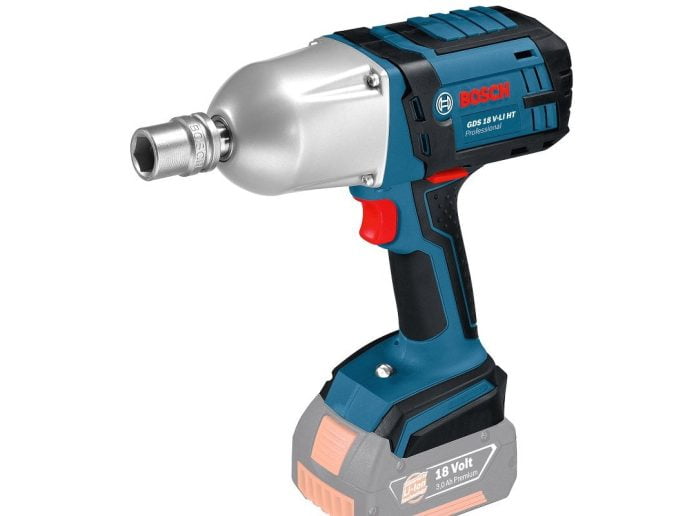When you think impact wrenches, it’s easy to default to compressed air-driven wheel nut removers, but these tools are useful in many applications, especially if you’re working with external fixings that have not been well maintained.
When you’re working with smaller nuts and bolts, a quality socket set and a squirt of penetrating oil given time to work is often the best solution, but for larger fixings, you’re going to need to call in the cavalry.
A cordless impact wrench incorporates a rotating mass that is spun using electricity supplied by the battery and then applied to an integrated anvil to generate more targeted torque than a tech could ever generate using hand tools. Because the mass always rotates, the operator doesn’t experience the force generated at the anvil – it’s applied at the head to the fixing.
The way impact wrenches work makes them a surprisingly delicate instrument, considering the torque being applied at the tip. They won’t round or strip bolt heads or nuts the way a cheap shifting spanner can, and because the technician is not throwing bodyweight around, they are much safer, especially if you’re working up high trying to break a fixing on a pole-mounted CCTV camera.
When it comes to selection, you want the obvious – good quality, good warranty, local support, appropriate levels of torque – you also need to decide whether you prefer an inline or pistol grip tool. There’s something intuitive about the pistol grip unit but it’s bigger and heavier that the inline, which looks like a giant powered screwdriver and is perfect for tighter spaces. You’ll also want a spread of sockets, including ¼-inch, 3/8-inch, ½-inch, ¾-inch and 1-inch. For heavier work you’ll likely need to step up to an AC or compressed air powered tool.
When it comes to selecting the necessary amount of torque, more than you need is best, but it’s worth considering that for electronic security applications, most your work will be undertaken on external brackets or housings that have been neglected – typically these will have smaller fixings. Higher speed operation means faster work, though slower and more careful work is often more exacting – that makes multi-speed units preferable.
There’s a lot of force applied by an impact wrench, it’s noisy and tiring to operate for extended periods. Operating comfort, including ear protection, are likely to be factors that require ongoing consideration. What this means is that having as much tool as you need and no more is likely to be the best choice.
Assist modes and smart control are worth having – an automatic stop is vital to ensuring you don’t over torque a nut or bolt using a power tool. Auto will also reverse off a fixing or slow down and stop the operation entirely, which is a real benefit when you’re hanging on for dear life.
Cordless Impact Wrenches we like include Bosch’s ¾-inch, 3-speed, ProFactor GDS18V-770 unit, with 770 ft-lbs of fastening torque and 1250 ft-lbs of breaking torque. The Bosch is 18V, has the latest battery technology and BiTurbo brushless motors. Cost is affordable for what you get.
At the high end, Ingersoll Rand’s W9000 series 1-inch cordless impact wrench is top of the heap. It employs four 5aH batteries for long life and increased power – 3000 ft-lbs of breaking torque and 2200 ft-lbs of fastening torque – over up to 250 operations. The W9000 has four power control modes with 2 featuring automatic shut-off (at 250 & 550 Nm of fastening torque).
The 20V W9000 also has an integrated power control system that includes 2 modes which will stop the tool in SNUG or MID-POWER, and it’s IP56-rated for use in tough environmental conditions – that includes dust, particles in the air and powerful jets of water. This unit is heavy and expensive – for most electronic security applications, something from Bosch or Makita will be the more sensible choice.
#sen.news #SEN #SENnews









